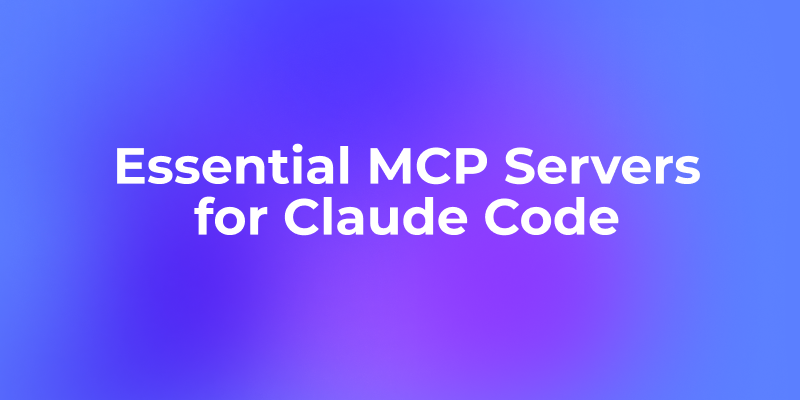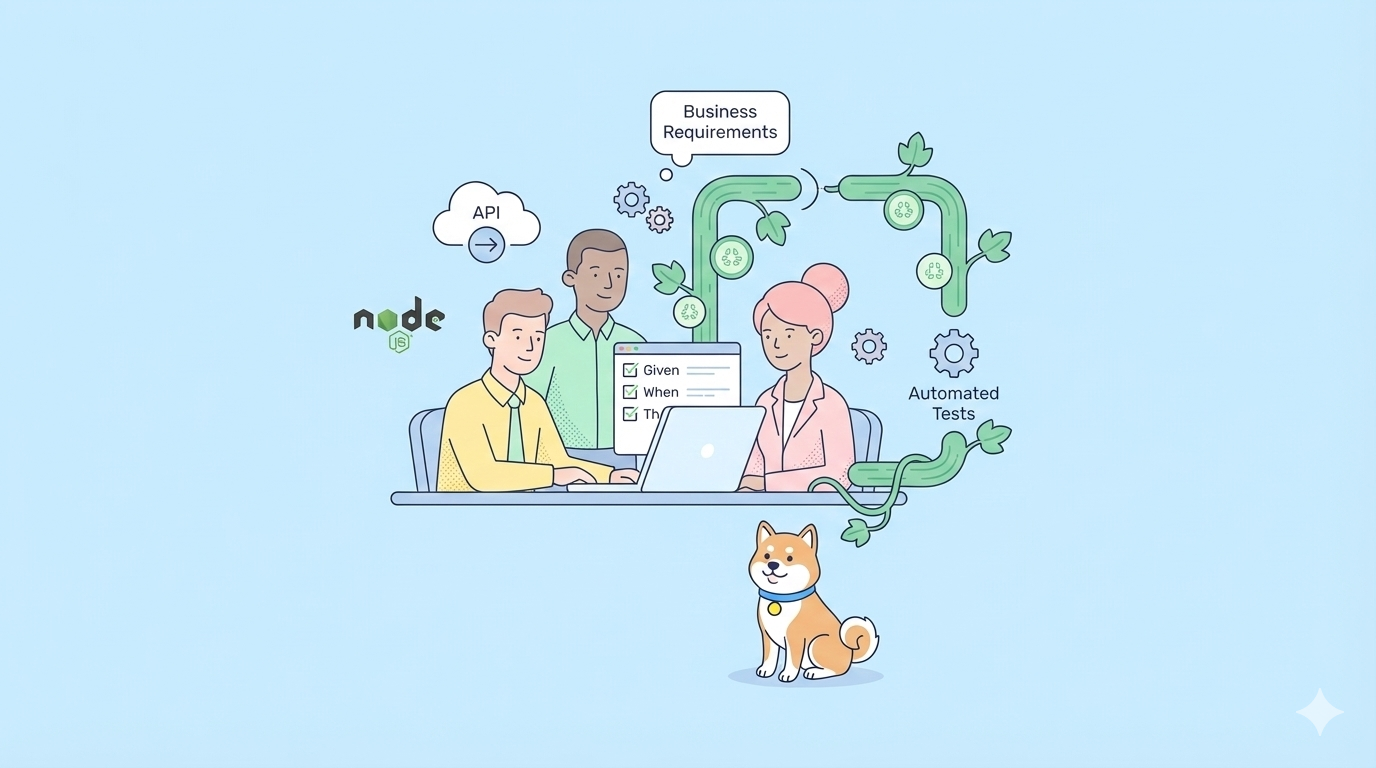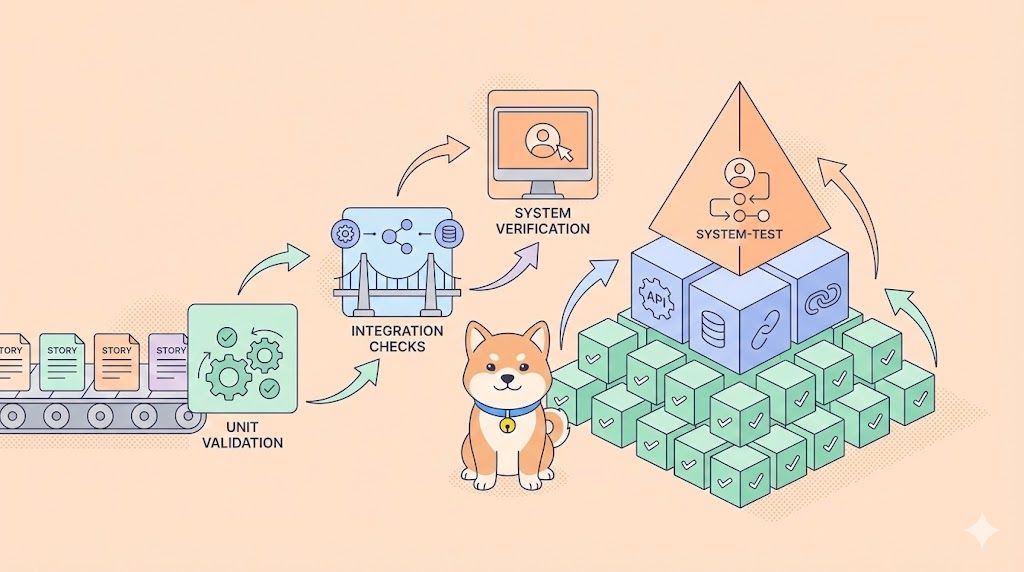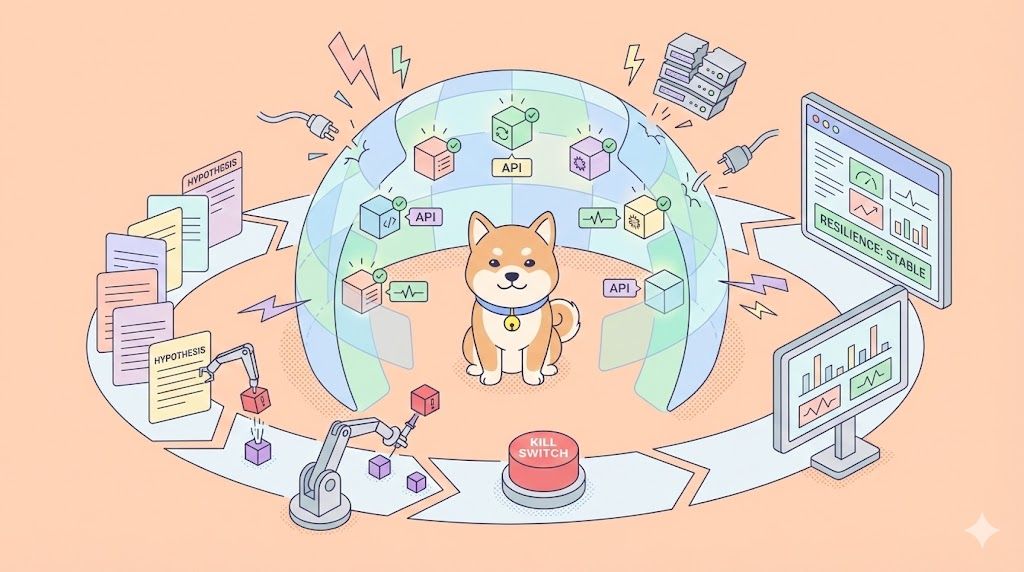Developers demand tools that streamline workflows, boost productivity, and integrate seamlessly with AI assistants. Claude Code, Anthropic’s command-line tool, empowers developers to delegate coding tasks directly from the terminal. However, its true potential shines when paired with Model Context Protocol (MCP) servers. These servers act as bridges, connecting Claude Code to external tools, APIs, and data sources, enabling real-time interactions with systems like GitHub, databases, and web browsers. By leveraging MCP servers, developers can automate repetitive tasks, access live data, and enhance code efficiency without leaving their coding environment.
What Is the Model Context Protocol (MCP)?
The Model Context Protocol (MCP), developed by Anthropic, standardizes communication between AI models like Claude and external systems. Think of MCP as a universal adapter, enabling Claude Code to interact with tools, databases, and services through a structured interface. MCP servers expose specific functionalities—such as file operations, web automation, or API calls—as tools or resources that Claude Code can access. This modularity allows developers to customize their AI assistant’s capabilities without extensive reconfiguration.
MCP operates through three components:
- Host: The application (e.g., Claude Code, Claude Desktop, or Cursor) that initiates requests.
- Client: The intermediary managing communication between the host and servers.
- Server: The tool or service providing data or functionality, such as GitHub or a local file system.
By integrating MCP servers, Claude Code transcends its role as a text-based assistant, becoming a dynamic tool for automation, debugging, and project management. Now, let’s explore the top 10 MCP servers that elevate Claude Code’s capabilities.
1. GitHub MCP Server: Streamline Version Control
The GitHub MCP server connects Claude Code to GitHub’s REST API, enabling seamless interaction with repositories. Developers can instruct Claude Code to read issues, manage pull requests, trigger CI/CD workflows, or even analyze commits without leaving the terminal. For instance, a developer can say, “Check the repository for issues related to authentication,” and Claude Code retrieves relevant data instantly.
Why It’s Essential
- Automation: Automates repetitive GitHub tasks like commenting on issues or merging PRs.
- Context Awareness: Pulls commit histories or issue details to provide context for debugging.
- Efficiency: Reduces context-switching between Claude Code and GitHub’s web interface.
Setup Process
- Install Node.js and run
npm install @composio/mcp@latest. - Execute
npx @composio/mcp@latest setup github --client claudein your terminal. - Authenticate via OAuth in Claude Code’s settings by editing
claude_desktop_config.json. - Restart Claude Code to activate the server.
Use Case
A developer debugging a regression bug can ask Claude Code to “pull the commit that introduced the bug” and receive the exact changeset, saving hours of manual searching.
2. Apidog MCP Server: Connect AI to API Specifications
The Apidog MCP server bridges the gap between your API specifications and AI-powered development workflows. This essential MCP server allows Claude and other AI assistants to directly access and work with your API documentation, making code generation more accurate and contextually aware.
Key Capabilities
- API Specification Integration: Connects AI to your Apidog project, online API documentation published by Apidog, or local OpenAPI/Swagger files
- Intelligent Code Generation: Generate DTOs, controllers, and client code based on your actual API contracts
- Real-time Updates: AI can refresh cached API data to work with the latest specification changes
Why Developers Love It
The Apidog MCP Server eliminates the guesswork from API-driven development. Instead of manually translating API specs into code, developers can simply ask Claude to "generate Java records for the Product schema" or "add the new fields to the User DTO based on the API specification." The AI pulls directly from your authoritative API documentation, ensuring generated code matches your exact contracts.
Setup Process
Let's say, now we want to use local OpenAPI/Swagger files as the data source for Claude AI.
- Open Claude Code’s settings and navigate to the MCP tab.
- Add the Apidog MCP server configuration to
mcp.json:
//for macOS/Linux:
{
"mcpServers": {
"API specification": {
"command": "npx",
"args": [
"-y",
"apidog-mcp-server@latest",
"--oas=<oas-url-or-path>"
]
}
}
}
//for Windows:
{
"mcpServers": {
"API specification": {
"command": "cmd",
"args": [
"/c",
"npx",
"-y",
"apidog-mcp-server@latest",
"--oas=<oas-url-or-path>"
]
}
}
}3. Test the connection by asking Claude Code to fetch one of the endpoint specifications.
4. If the AI successfully returns information that meets the expectations, the connection is established!
3. File System MCP Server: Manage Local Files
The File System MCP server enables Claude Code to read, write, and edit local files, making it a cornerstone for project management. Developers can instruct Claude Code to modify scripts, analyze logs, or organize directories without manual intervention.
Why It’s Essential
- File Operations: Performs CRUD operations on local files.
- Context Retention: Maintains project context by accessing relevant files.
- Automation: Automates file cleanup or refactoring tasks.
Setup Process
- Clone the repository:
git clone https://github.com/modelcontextprotocol/servers.git. - Navigate to the
src/filesystemdirectory and install dependencies:npm install. - Configure
claude_desktop_config.jsonwith the server’s path. - Restart Claude Code and test by asking, “List all Python files in the current directory.”
Use Case
A developer can ask Claude Code to “update the README.md with a new section,” and the server will append the content directly to the file.
4. Sequential Thinking MCP Server: Enhance Problem-Solving
The Sequential Thinking MCP server equips Claude Code with structured problem-solving capabilities. It breaks complex tasks into logical steps, ideal for architectural design or large-scale refactoring.
Why It’s Essential
- Structured Reasoning: Guides Claude Code to approach problems methodically.
- Complex Tasks: Handles multi-phase planning for system design or debugging.
- Scalability: Supports large codebases with clear, step-by-step logic.
Setup Process
- Install the server:
npm install -g @modelcontextprotocol/server-sequential-thinking. - Add to
claude_desktop_config.json:
{
"mcpServers": {
"sequential-thinking": {
"command": "node",
"args": ["sequential-thinking.js"]
}
}
}
- Restart Claude Code and test with, “Break down the steps to refactor this module.”
Use Case
When redesigning a microservices architecture, a developer can ask Claude Code to “outline the steps to decouple this service,” receiving a detailed plan with actionable steps.
5. Puppeteer MCP Server: Automate Web Interactions
The Puppeteer MCP server enables Claude Code to control web browsers for tasks like scraping, testing, or automating workflows. It leverages Puppeteer’s APIs to navigate pages, take screenshots, or interact with elements.
Why It’s Essential
- Web Automation: Automates repetitive browser tasks.
- Testing: Runs UI tests across browsers like Chrome or Firefox.
- Data Extraction: Scrapes web content for analysis or integration.
Setup Process
- Install Puppeteer:
npm install puppeteer. - Clone the Puppeteer MCP repository and install dependencies.
- Configure Claude Code with the server’s URL and restart.
- Test by asking, “Take a screenshot of this webpage.”
Use Case
A developer testing a web app can ask Claude Code to “click the login button and verify the redirect,” automating the process and receiving a report on the outcome.
6. PostgreSQL MCP Server: Query Databases Naturally
The PostgreSQL MCP server allows Claude Code to query databases using natural language, simplifying data operations for developers unfamiliar with SQL syntax.
Why It’s Essential
- Natural Language Queries: Translates plain English into SQL queries.
- Data Access: Retrieves and manipulates database records seamlessly.
- Productivity: Reduces the need for manual query writing.
Setup Process
- Clone the repository:
git clone https://github.com/modelcontextprotocol/servers.git. - Navigate to
src/postgresand install dependencies. - Configure the server with your database credentials in
claude_desktop_config.json. - Test by asking, “Fetch all users from the database.”
Use Case
A developer can ask Claude Code to “summarize sales data from the past month,” receiving a formatted report without writing complex SQL queries.
7. Notion MCP Server: Boost Productivity
The Notion MCP server connects Claude Code to Notion, enabling developers to fetch documents, update tasks, or integrate project requirements into their coding workflow.
Why It’s Essential
- Task Management: Updates Notion tasks directly from Claude Code.
- Documentation Access: Retrieves project specs or notes for context.
- Collaboration: Syncs team workflows with AI-driven updates.
Setup Process
- Run
npx @composio/mcp@latest setup notion --client claude. - Complete OAuth authentication in Claude Code’s settings.
- Test by asking, “Fetch the product requirements from Notion.”
Use Case
A developer can ask Claude Code to “add a new task to Notion for code review,” streamlining project management without leaving the terminal.
8. Memory Bank MCP Server: Retain Context
The Memory Bank MCP server provides persistent memory for Claude Code, ensuring context retention across sessions. It’s ideal for managing large codebases or tracking decisions.
Why It’s Essential
- Context Continuity: Recalls prior interactions and decisions.
- Large Projects: Maintains coherence in multi-file projects.
- Efficiency: Reduces redundant explanations in long sessions.
Setup Process
- Clone the repository:
git clone https://github.com/modelcontextprotocol/server-memory.git. - Install dependencies and configure the server.
- Add to
claude_desktop_config.jsonand restart Claude Code. - Test by asking, “Recall the last file I edited.”
Use Case
A developer can ask Claude Code to “resume work on the last module I edited,” and the server retrieves the relevant context instantly.
9. Figma MCP Server: Design-to-Code Workflow
The Figma MCP server bridges Claude Code with Figma, enabling developers to translate design files into code or generate UI components directly from the terminal.
Why It’s Essential
- Design Integration: Converts Figma designs into code snippets.
- Prototyping: Generates UI components for rapid prototyping.
- Collaboration: Aligns developers and designers seamlessly.
Setup Process
- Run
npx @composio/mcp@latest setup figma --client claude. - Authenticate via OAuth and configure in Claude Code.
- Test by asking, “Generate HTML for this Figma design.”
Use Case
A developer can ask Claude Code to “convert this Figma layout to React components,” receiving production-ready code tailored to the design.
10. Zapier MCP Server: Automate Cross-App Workflows
The Zapier MCP server connects Claude Code to Zapier, enabling automation across multiple apps like Slack, Gmail, or Trello. It’s perfect for developers managing complex workflows.
Why It’s Essential
- Cross-App Automation: Triggers actions across multiple platforms.
- Productivity: Streamlines repetitive tasks like notifications or updates.
- Flexibility: Supports a wide range of app integrations.
Setup Process
- Run
npx @composio/mcp@latest setup zapier --client claude. - Authenticate with Zapier and configure in Claude Code.
- Test by asking, “Create a Slack notification for new GitHub issues.”
Use Case
A developer can ask Claude Code to “send a Slack message when a new PR is opened,” automating team communication effortlessly.
Choosing the Right MCP Server for Your Workflow
Selecting the right MCP server depends on your project needs. Consider these factors:
- Task Type: Choose servers like Puppeteer for web automation or PostgreSQL for database tasks.
- Ease of Setup: Opt for servers with clear documentation and OAuth support, like Apidog or Notion.
- Scalability: Prioritize servers like Memory Bank for large projects or Sequential Thinking for complex tasks.
- Integration Needs: Use Zapier for cross-app workflows or GitHub for version control.
Test servers with simple prompts to ensure compatibility with Claude Code. Always secure sensitive data by restricting server access to specific directories or APIs.
Tips to Maximize MCP Server Performance
To get the most out of MCP servers with Claude Code:
- Keep Configurations Clean: Avoid typos in
claude_desktop_config.jsonto prevent connection issues. - Use Debug Flags: Launch Claude Code with
--mcp-debugto troubleshoot configurations. - Leverage Slash Commands: Store prompt templates in
.claude/commandsfor reusable workflows. - Combine Servers: Integrate multiple servers (e.g., GitHub and Apidog) for comprehensive workflows.
- Monitor Performance: Limit active servers to avoid system slowdowns, especially with resource-heavy servers like Puppeteer.
Why MCP Servers Matter for Claude Code in 2025
MCP servers transform Claude Code into a dynamic, context-aware assistant capable of interacting with real-world tools and data. By integrating servers like GitHub, Apidog, and PostgreSQL, developers can automate tasks, streamline workflows, and focus on building rather than switching between tools. The modularity of MCP ensures new servers are continuously developed, keeping Claude Code adaptable to evolving needs.
Whether you’re managing repositories, querying databases, or automating web tasks, these top 10 MCP servers empower Claude Code to deliver unparalleled productivity. Start experimenting with these servers today, and don’t forget to download Apidog for free to enhance your API-driven workflows.



